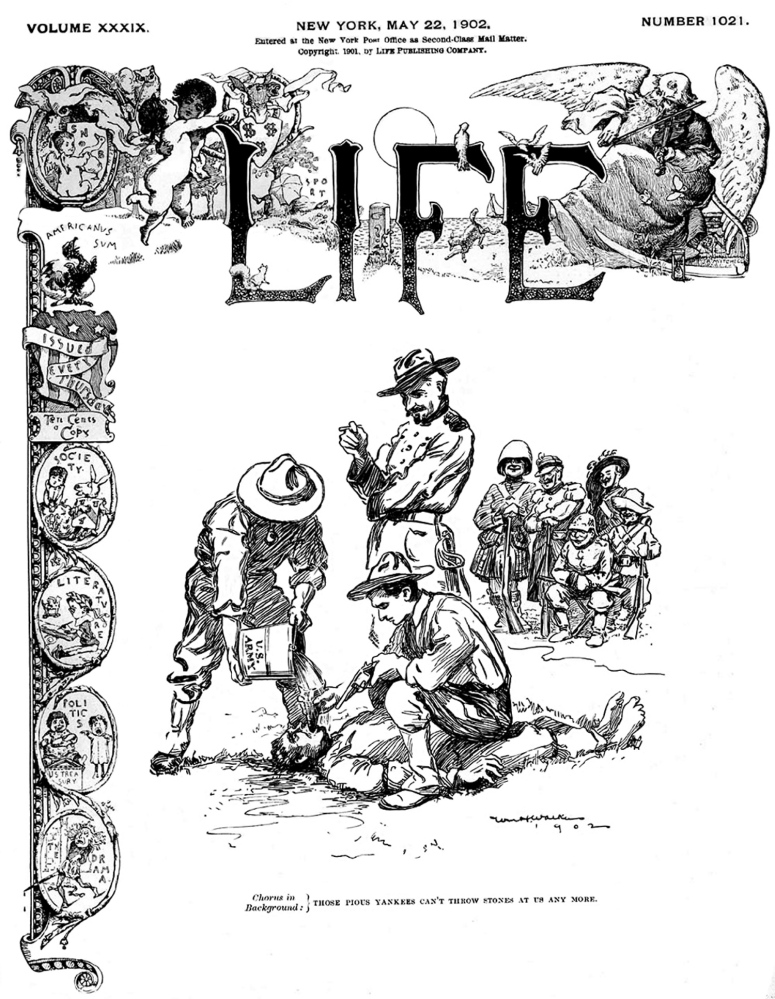After many years of teaching in college, I’ve concluded that few demographic groups are more pitiless, hardhearted and coldblooded than a class full of college freshmen.
Capital punishment? My students are devoted proponents, arguing that justice should be swift and merciless. In fact, many of them don’t blink when they consider punishments such as hand amputation for theft and execution by stoning, practices still current in some countries.
And torture? They’ve seen plenty of it on TV and it seems to work. Why should we hesitate to inflict pain if we can prevent a terrorist attack on innocent people?
But among their fellow citizens my students aren’t that unusual. Many Americans aren’t squeamish about torture, in theory, at least. Sarah Palin got laughs and cheers in April at the National Rifle Association convention in Indianapolis when she said “Waterboarding is how we baptize terrorists.”
In fact, many of us aren’t particularly disgusted or repulsed by torture in the abstract. A 2011 Pew Research Center poll reports that 53 percent of Americans believe that torture “often or sometimes” is justified.
But, then, who were we kidding, anyway? In anticipation of the Senate Intelligence Committee’s release of the executive summary of its torture report last week, American embassies around the world bolstered their security and vigilance. But a shocked reaction from the outside world never materialized, probably because no one was shocked or even particularly surprised.
Torture is one of warfare’s oldest weapons, and, while its effectiveness is questionable, few countries have defeated others without its use. The United States isn’t an exception. Tim Weiner’s 2007 history of the CIA, “Legacy of Ashes,” documents some of the systematic and secret programs developed to dominate and terrorize an enemy.
A good example among many is the Phoenix program, which was supervised by William Colby, a future director of the C.I.A. Between 1968 and 1971 Phoenix used torture, Weiner reports, to interrogate Vietcong suspects. More than 20,000 were killed.
But we’ve never been proud of our use of torture. In fact, the Intelligence Committee’s report documents efforts by the CIA to deny or cover up the post-9/11 torture program, a sure sign that torture is something that we shouldn’t be doing. And torture apologists — Dick Cheney is notable — have tried to find ways to rationalize practices that are clearly torture.
These rationalizations aren’t convincing. Former Minnesota Gov. Jesse Ventura, who experienced waterboarding when training as a soldier, said, “You give me a waterboard, Dick Cheney and one hour, and I’ll have him confess to the Sharon Tate murders.”
The transparency of the executive summary of the committee’s torture report is important, necessary and welcome. But it’s a mistake to see it as absolution for a temporary moral deviation into torture caused by fear and an excess of caution after 9/11.
Consider this Life magazine cover dated May 22, 1902: I first came across it in James Bradley’s “The Imperial Cruise,” a history of Theodore Roosevelt’s questionable diplomatic manipulations in Japan, China, Korea and the Philippines.
The cover displays a drawing of three American soldiers waterboarding a bound Filipino. In the background, five Europeans representing the colonial powers, for who torture was essential, are gloating over America’s surrender of the moral high ground. The caption reads: “Those pious Yankees can’t throw stones at us any more.”
America’s use of torture — and our embarrassment over it — has a history that long pre-dates 9/11. Fortunately, it still pricks our conscience. And after the Intelligence Committee’s report, no one articulated that conscience more eloquently than Sen. John McCain, who called torture a stain on our national honor.
Some aren’t fond of McCain’s politics, but no one can doubt his courage and loyalty to his country. And having been tortured during his captivity in North Vietnam, he speaks with authority that apologists like Cheney cannot gainsay.
I suspect that being tortured opens a window of insight into the darkest corners of the human heart. There are a lot of other ugly things in there, as well, always ready to come out.
John M. Crisp, an op-ed columnist for Tribune News Service, teaches in the English Department at Del Mar College in Corpus Christi, Texas. Email at jcrisp@delmar.edu.

Send questions/comments to the editors.



Success. Please wait for the page to reload. If the page does not reload within 5 seconds, please refresh the page.
Enter your email and password to access comments.
Hi, to comment on stories you must . This profile is in addition to your subscription and website login.
Already have a commenting profile? .
Invalid username/password.
Please check your email to confirm and complete your registration.
Only subscribers are eligible to post comments. Please subscribe or login first for digital access. Here’s why.
Use the form below to reset your password. When you've submitted your account email, we will send an email with a reset code.